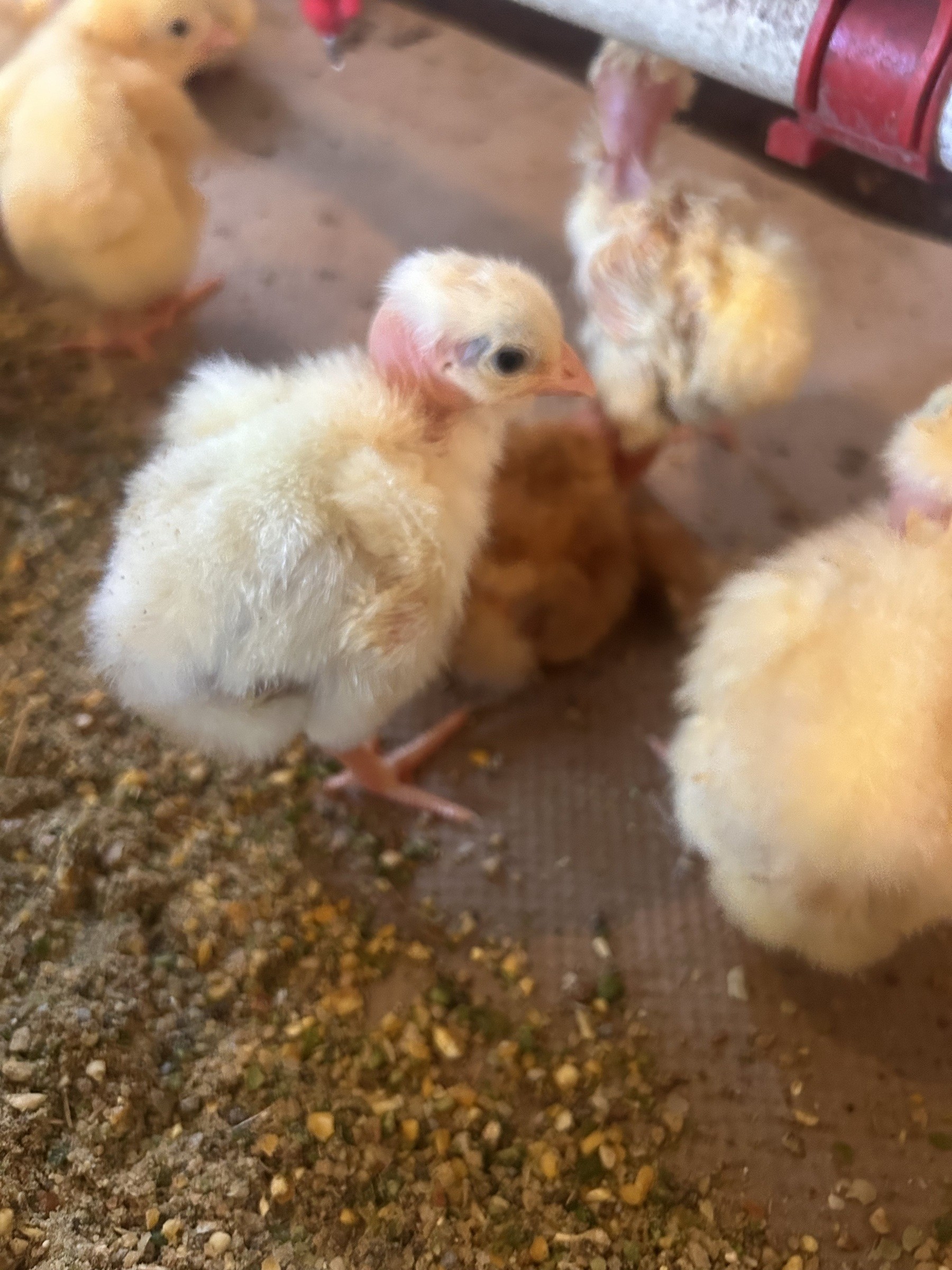It looks like they're sleeping 🌻
posted on
August 25, 2025
Someone came into the store this week and said the sunflower field looks like it's nodding or sleeping right now, and that is probably true. We tried really hard this year to time these flowers up for optimum harvest. Their bloom time wasn't as long, but their heads look full and plump. Barring the blackbirds don't eat them all first, we are waiting for them to dry down fully. We will then run our combine (machine) in them and pick up as many sunflower seeds as possible. From there we will press the seeds into meal and use them this winter to mix into our pig and chicken layer feed as a protein source. Since we don't use soy, we are always looking to use alternate sources to give the animals as much protein as needed to lay those delicious eggs and live their best lives. We grind all of our own feed on farm each week to keep it as fresh as possible. Stay tuned for more on this process.

Last week, we opened our September beef shares. We are sold out of 1/2 beeves, but do have a few 1/4 beef shares available still. We will open shares for October beef around mid September. Several of the details are explained below if you are new to this.
Reserve September Bulk Beef Here
Here are a few details on bulk beef buying that some customers overlook (these questions are ALSO answered below in the FAQ section and when you click further on the actual product links):
- The price on our website is for the actual hanging animal only per pound, you then pay the butcher for his services when you pick up.
- You pick up at the butcher, meat is not delivered.
- The packaging for for bulk beef is NOT roll stock, it is very durable and holds up great, but if you are used to roll stock, and think anything but that is inferior, bulk beef buying is not your ticket (see picture below of THAWED ground beef - bulk beef packaging is on the right, roll stock is on the left.)
- You can request organ meats, bones, and fat with a 1/4 or a 1/2, it is INCLUDED in the cost.
- All beef requires a $150 non-refundable deposit, you will be charged for the full animal when it is harvested; a heads up email AND text will be sent prior
- You can customize a 1/2 beef, 1/4 beef has a set cut sheet which is spelled out in the item description.
- The difference between a 1/4 bone in and 1/4 boneless is JUST the steaks. For bone in, the steaks will be the rib steak, and then t-bone/porterhouse. For boneless, the steaks will be ribeye, New York, and tenderloin. This is the only difference. You will still have bones in your short ribs, roasts, etc. and can receive your marrow and/or knuckle bones with EITHER selection.



